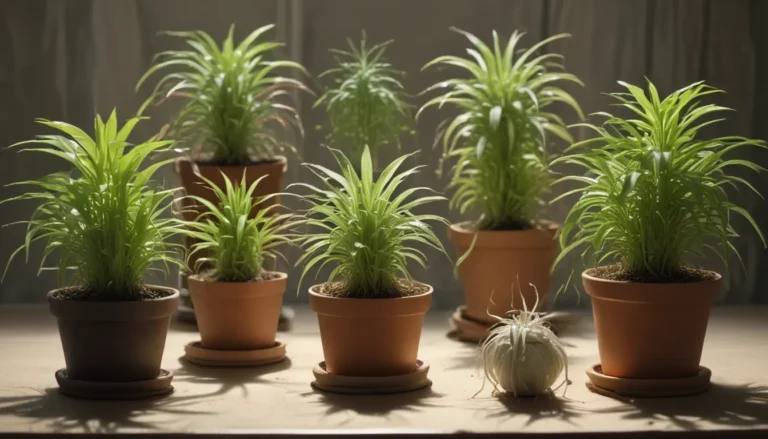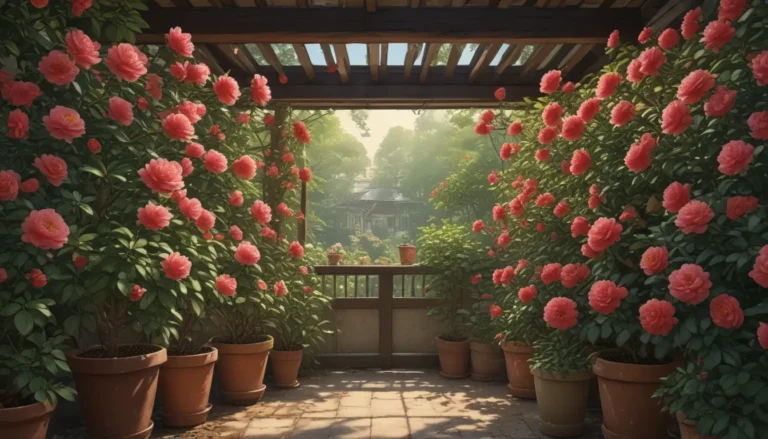How to Successfully Grow and Care for Desert Marigolds

Introducing the Desert Marigold
Are you on the lookout for a stunning and eco-friendly addition to your garden? Look no further than the desert marigold, a waterwise species native to the American Southwest. This cheerful wildflower offers a vibrant splash of yellow blooms, making it a perfect choice for those residing in hot, dry areas.
Native species like the desert marigold come with many benefits, offering beauty to your garden while requiring minimal maintenance. In this article, we will delve into everything you need to know to cultivate and care for this resilient plant. Let’s take a closer look at what’s in store for you:
What You’ll Discover
- Understanding the Desert Marigold
- Cultivation and Historical Background
- Propagation Tips
- Techniques for Growth
- Essential Growing Guidelines
- Pruning and Upkeep
- Where to Source
- Managing Pests and Disease
- Best Utilizations
- Quick Reference Guide for Growing
Understanding the Desert Marigold
Botanically known as Baileya multiradiata, the desert marigold is an herbaceous perennial well-suited to arid climates. These yellow wildflowers bloom from spring through to autumn and feature multiple layers of scalloped petals centered around a basal rosette of lobed leaves. They thrive in hot, dry environments and reflect sunlight with their grayish-green foliage.
This resilient plant grows in mounds, reaching heights of 8 to 24 inches and widths of 24 to 30 inches, depending on the local conditions. It adapts well to cold temperatures down to 10°F and flourishes in USDA Hardiness Zones 7b to 10b.
Cultivation and Historical Background
Originally hailing from arid regions of northern Mexico and the southwestern US, the desert marigold prefers habitats such as semi-desert grasslands, chaparral communities, and desert scrub. This species, belonging to the Asteraceae family, showcases a rich history deeply intertwined with the local ecosystem.
The genus Baileya, named after botanist Jacob Whitman Bailey, includes only three species native to the region. The desert marigold, also known as “showy desert marigold,” “paper daisy,” or “desert baileya,” offers not only visual appeal but also historical significance. Interestingly, it has been used in various applications, including adobe construction and deodorant, although it should be kept away from certain livestock due to its toxicity.
Propagation Techniques
Easily propagated from seeds, the desert marigold can be sowed directly in the soil or transplanted from pots. For direct sowing, it is advisable to seed heavily to overcome low germination rates. Spring and fall are ideal times for planting, with specific requirements for each season.
When transplanting, ensure proper preparation of the soil and roots to promote successful growth. This plant’s adaptability makes it suitable for both novice and experienced gardeners looking to introduce native species into their landscapes.
Techniques for Growth
For optimal growth and blooming, plant the desert marigold in full sun in well-draining soil with minimal irrigation. This species thrives in arid conditions and can survive with minimal water requirements. Understanding its preferences and adapting your care accordingly will ensure a thriving desert marigold in your garden.
Check the local rainfall levels to gauge supplemental watering needs and adjust accordingly. During the summer, occasional dormancy might occur, but with proper care, the plant will continue to bloom with the right amount of moisture.
Essential Growing Guidelines
- Plant in full sun
- Choose rocky or sandy soil with fast drainage
- Provide minimal irrigation based on water needs
Pruning and Upkeep
As a low-maintenance species, the desert marigold requires little upkeep under suitable conditions. Avoid fertilization and use of organic mulches that may retain excess moisture around the roots. Mulching with rock or gravel can assist in water retention and weed prevention.
While deadheading is optional, leaving the faded flowers can provide visual interest and support local wildlife populations. In areas where perennialization occurs, periodic trimming to encourage new growth is recommended.
Where to Source
Locating transplants of the desert marigold might require visiting local native plant sales or contacting native plant societies. Alternatively, seeds are readily available for purchase online, enabling easy access to this beautiful wildflower.
Managing Pests and Disease
The desert marigold’s natural resilience makes it less susceptible to pests and diseases compared to non-native species. Focus on providing suitable growing conditions to prevent issues such as root rot or crown rot due to overwatering. Consistent care will ensure a healthy and robust plant capable of attracting beneficial pollinators.
Best Utilizations
The desert marigold’s versatility allows for multiple applications in landscaping. Consider using it in mass plantings, xeriscapes, rock gardens, or cut flower arrangements. This species naturalizes easily and thrives in various environments, making it an excellent choice for erosion control or wildlife gardens.
Quick Reference Guide for Growing
- Plant Type: Annual, biennial, or short-lived perennial
- Native to: Mexico and southwestern US
- Hardiness (USDA Zone): 7b-10
- Bloom Time/Season: Spring-fall
- Exposure: Full sun
- Time to Maturity: 1-2 years
- Spacing: 12-18 inches
- Height: 8-24 inches
- Spread: 24-30 inches
- Water Needs: Very low
- Common Diseases: Crown rot, root rot
- Attracts: Bees, birds, butterflies, moths, other pollinators
Conclusion
In conclusion, the desert marigold offers a blend of beauty and resilience, making it a valuable addition to any garden. By understanding its unique characteristics and requirements, you can cultivate a thriving landscape filled with vibrant blooms and local wildlife. Whether used for erosion control, cut flowers, or wildlife habitats, this waterwise plant is a versatile and low-maintenance choice for arid climates. Consider incorporating the desert marigold into your next landscaping project to enjoy its many benefits and visual appeal.
Have you cultivated the desert marigold in your garden before? What growing tips or experiences would you like to share with our readers? Feel free to leave your thoughts and insights in the comments below!
Looking for more desert-friendly plant options? Explore our articles on heat-loving species such as Turpentine Bush, Bat-Faced Cuphea, and Agave for diverse landscaping possibilities.





